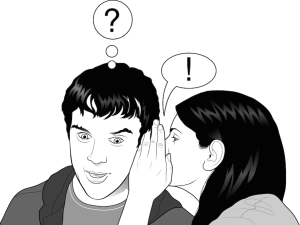
Source: Getty Images
Originally published on Libero Network and cross-posted here with their permission.
“Exercise is good for you. You’re not doing anything wrong. Keep exercising. It will make you fit and strong and lean. You’re not exercising too much. Those other people are just jealous. You’re only feeling tired because you’re so unfit. Exercise more. You have to work hard if you want results.”
That was what my eating disorder said to me day in and day out to keep me trapped and compulsively exercising.
I know now that that voice was lying.
I work as an exercise scientist, personal trainer, and group fitness instructor, and I study Exercise Physiology at university. That is to say: A very large portion of my life revolves around exercise.
When I first started exercising, I genuinely loved and enjoyed it. But as my eating disorder developed, it began to use this to its advantage.
I began exercising excessively and obsessively, yet despite all my own knowledge about exercise, I still wasn’t open to the thought that I was doing anything unhealthy and denied it when anyone asked.
Exercise, as a general rule, is good for you.
However, there are two factors which shift exercise from the “good for your health” to the “bad for your health” basket: exercising to the detriment of your body and exercising to the detriment of your mind.
1. Exercising to the Detriment of Your Body
This is the result of the amount of exercise you’re doing and the lack of recovery your body is receiving.
At this point, you might even still be enjoying exercising (as I was at the beginning); however, your body will eventually begin to feel tired, sore, and weak.
You may experience dizzy spells, fainting, irregular or absent menstrual cycles, difficulty sleeping, increased injuries, or illness.
The amount of exercise that is healthy will vary from person to person – what is healthy for an iron man isn’t healthy for me.
My ED told me that the amount of exercise I was doing was perfectly healthy, because athletes do it and they’re healthy.
But athletes also gradually build up to that level over many years, fuel their bodies appropriately, have regular recovery sessions, and stop or reduce exercise when injured/sick.
2. Exercising to the Detriment of Your Mind
This develops because of reasons why you are exercising and the thoughts behind it.
You may be engaging in a healthy amount of exercise (or you might be over- exercising as well), but the thought processes behind it are still damaging.
Being motivated to exercise purely as a means to burn calories, as opposed to improving the health of your body, is a red flag.
If you are consistently prioritizing exercise over social situations, study, or work, feeling anxious or guilty at the thought of missing an exercise session, exercising because you “have to,” rather than because you “want to,” and/or spending a large amount of time thinking about or planning exercise, it is likely that you’ve developed an unhealthy obsession with exercise that leaves little room in your thoughts and life for other things.
Signs that You May Be Compulsively Exercising or Over-Training
- Irregular or absent menstrual cycles
- Depression
- Difficulty sleeping
- Muscle soreness, aches, and injuries
- Prioritizing exercise over social events, work, study, etc.
- Exercising despite being sick or injured
- Inability to miss an exercise session or feeling guilty for missing an exercise session
- Exercising because you feel you have to, rather than because you want to
- Exercising purely to burn calories
- Consistently thinking about exercise
- Exercising at inappropriate times (i.e.: the middle of the night)
So, What Is Healthy Exercise?
Healthy exercise occurs when we exercise because it makes us feel good – physically, emotionally, and mentally.
As mentioned earlier, it’s difficult to set general guidelines on what constitutes the right amount of exercise for everyone.
For most people, 2-5 hours per week is an appropriate range.
However, with some thought and listening to your body (and maybe some professional advice), you can determine the healthiest amount of exercise for you.
Signs of Healthy Exercise
- Exercise makes you feel good – physically, mentally, and emotionally
- You can take a day, week, or month off of exercise without feeling anxious or guilty
- You rest and recover if you are sore, injured, tired, or sick
- You engage in physical activity that you enjoy (walking, dancing, kayaking, cycling, etc.), rather than the type that you think you should do or that burns the most calories
- You allocate no more time to thinking about exercise than you would to household chores or what’s on television
- You are comfortable with missing an exercise session to attend a social event, work, or study
- You think about exercise as a way to keep your mind and body fit, strong, and healthy, as opposed to simply a way to burn calories or change your body shape
At times, I still battle with compulsive exercising.
Recovery takes time, and I have my slip ups. But I’ve come a long way from where I used to be.
I can now recognize when I’m engaging in ED behaviors.
I always find it helpful to think about what advice I would give to a friend about healthy exercise and aim to apply that advice to myself.
You should, too.
Want to discuss this further? Login to our online forum and start a post! If you’re not already registered as a forum user, please register first here.
Jodie Glasspool is an accredited exercise scientist, personal trainer, and group fitness instructor. She has a Bachelor’s degree in Exercise Science and Human Movement and is currently completing her Masters in Clinical Exercise Physiology. She encourages others to develop body acceptance at any size through intuitive eating and joyful movement. You can contact her through her personal website.
Search our 3000+ articles!
Read our articles about:
Our online racial justice training
Used by hundreds of universities, non-profits, and businesses.
Click to learn more




















